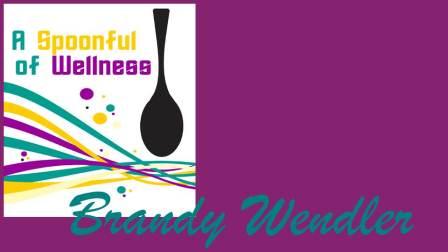
Did you know that March 26 – April 1 is World Salt Awareness Week? I had no clue. However, in honor of National Nutrition Month and in the name of heart health, I wanted to share this article published by the CDC. You can find the original article here. This type of information is important to me because, despite physical activity, sometimes your genetics can make you more prone to high blood pressure. My husband is in the pre-hypertensive phase (120-139 systolic and 80-89 diastolic). See all levels here. He works out almost everyday so in order to keep his blood pressure normal, we have to watch his salt intake. Bread is my weakness on the top ten sources for sodium list (I bet my husband's is pizza!). What's yours?
There is strong evidence that eating too much sodium raises blood pressure, and high blood pressure is the most important modifiable risk factor for stroke.
About 9 in 10 Americans aged 2 years and older eat too much sodium. Most of the sodium we eat comes from packaged, processed, store-bought and restaurant food. There is strong evidence that eating too much sodium raises blood pressure, and high blood pressure is the most important modifiable risk factor for stroke. A person with normal blood pressure has half the risk of having a stroke in their lifetime compared to someone with high blood pressure.
 Stroke is the fourth leading cause of death in the United States. Nearly 800,000 people suffer a stroke each year, and contrary to popular belief, most of them survive – but often with serious consequences. At least half of all stroke patients are left permanently disabled with paralysis, speech difficulties, memory loss and emotional problems. Stroke survivors also face enormous medical expenses. In 2010, stroke cost the nation an estimated $54 billion in health care services, medications, and missed days of work.
Stroke is the fourth leading cause of death in the United States. Nearly 800,000 people suffer a stroke each year, and contrary to popular belief, most of them survive – but often with serious consequences. At least half of all stroke patients are left permanently disabled with paralysis, speech difficulties, memory loss and emotional problems. Stroke survivors also face enormous medical expenses. In 2010, stroke cost the nation an estimated $54 billion in health care services, medications, and missed days of work.
Eating less sodium can help prevent or lower your risk of stroke. Current dietary guidelines recommend eating less than 2,300 milligrams of sodium per day. If you are African American, 51 years of age or older, have high blood pressure, diabetes or chronic kidney disease, you should further reduce sodium to 1,500 milligrams per day.
According to a recent CDC Vital Signs report, 44% of the sodium we eat comes from only 10 types of foods.
Top Sources of Sodium in the diet:
 initiative to prevent a million heart attacks and strokes over the next 5 years.
initiative to prevent a million heart attacks and strokes over the next 5 years.
There is strong evidence that eating too much sodium raises blood pressure, and high blood pressure is the most important modifiable risk factor for stroke.
About 9 in 10 Americans aged 2 years and older eat too much sodium. Most of the sodium we eat comes from packaged, processed, store-bought and restaurant food. There is strong evidence that eating too much sodium raises blood pressure, and high blood pressure is the most important modifiable risk factor for stroke. A person with normal blood pressure has half the risk of having a stroke in their lifetime compared to someone with high blood pressure.
 Stroke is the fourth leading cause of death in the United States. Nearly 800,000 people suffer a stroke each year, and contrary to popular belief, most of them survive – but often with serious consequences. At least half of all stroke patients are left permanently disabled with paralysis, speech difficulties, memory loss and emotional problems. Stroke survivors also face enormous medical expenses. In 2010, stroke cost the nation an estimated $54 billion in health care services, medications, and missed days of work.
Stroke is the fourth leading cause of death in the United States. Nearly 800,000 people suffer a stroke each year, and contrary to popular belief, most of them survive – but often with serious consequences. At least half of all stroke patients are left permanently disabled with paralysis, speech difficulties, memory loss and emotional problems. Stroke survivors also face enormous medical expenses. In 2010, stroke cost the nation an estimated $54 billion in health care services, medications, and missed days of work.According to a recent CDC Vital Signs report, 44% of the sodium we eat comes from only 10 types of foods.
Top Sources of Sodium in the diet:
- Breads and rolls
- Cold cuts and cured meats
- Pizza
- Poultry
- Soups
- Sandwiches
- Cheese
- Pasta dishes
- Meat dishes
- Snacks
- Read Nutrition Facts labels when shopping to find the lowest sodium options of your favorite foods.
- Eat more fruits and vegetables, either fresh, frozen (without sauce), or canned (with no salt added).
- Limit processed foods high in sodium.
- When eating out, request no salt be added to your meal.

No comments:
Post a Comment